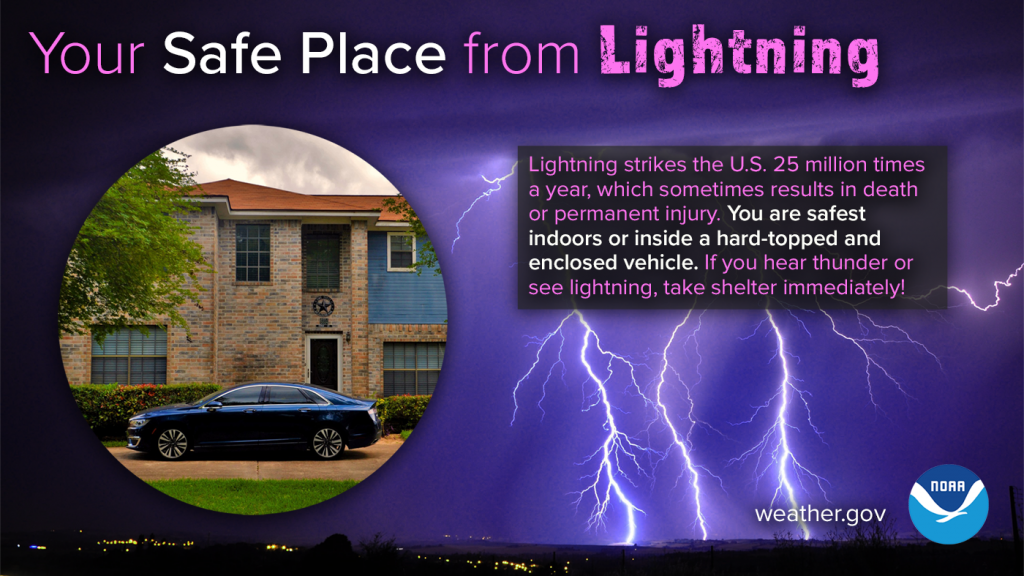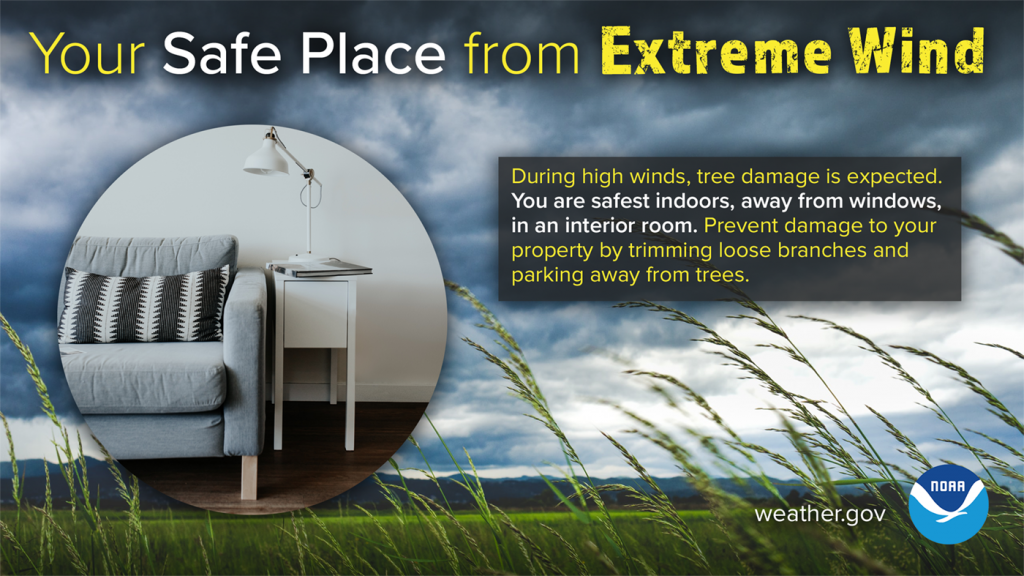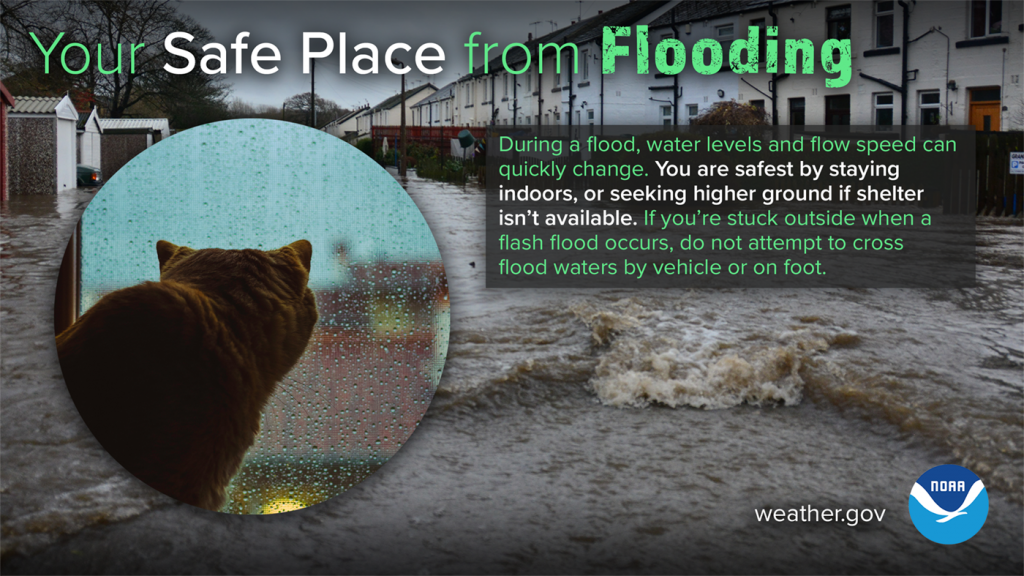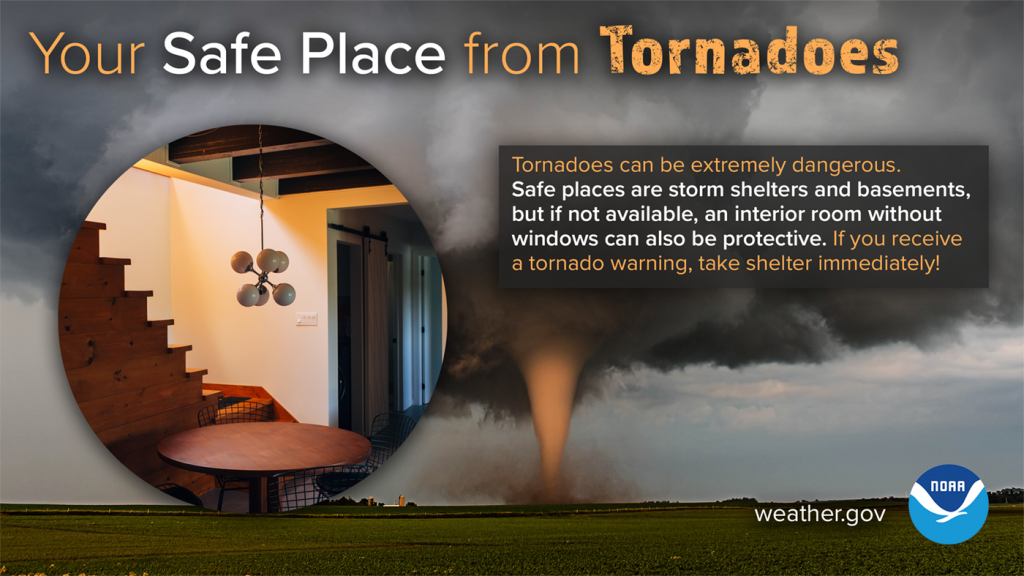As spring weather season begins, we want to remind you of where the safest places are to ride out these stormy possibilities:
Lightning

Lightning strikes the U.S. 25 million times a year, which sometimes results in death or permanent injury. You are safest indoors, or inside a hard-topped enclosed vehicle. Stay Weather-Ready and learn more about lightning safety at weather.gov/safety/lightning.
Extreme Wind

During high winds, tree damage is expected, and loose objects can become airborne and dangerous. You are safest indoors, away from windows, in an interior room. Stay Weather-Ready and learn more about wind safety at weather.gov/safety/wind.
Flooding

During a flood, water levels and flow speed can quickly change. You are safest by staying indoors, or seeking higher ground if shelter isn’t available. If you’re stuck outside when a flash flood occurs, do not attempt to cross flood waters by vehicle or on foot. Learn more about flood safety at weather.gov/safety/flood.
Tornadoes

Tornadoes can be extremely dangerous. Safe places include storm shelters and basements — but if not available, an interior room without windows can also be protective. If you receive a tornado warning, take shelter immediately! Learn more about tornado safety at: weather.gov/safety/tornado.

